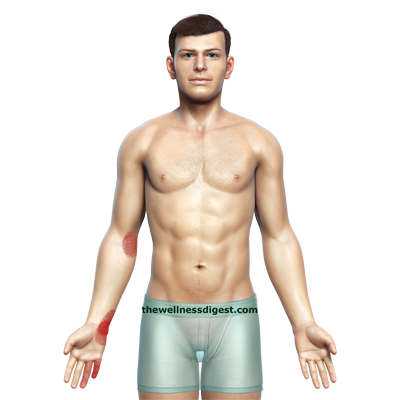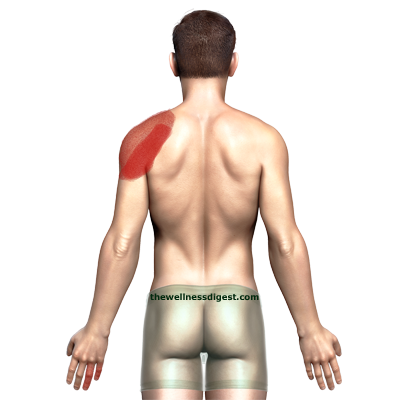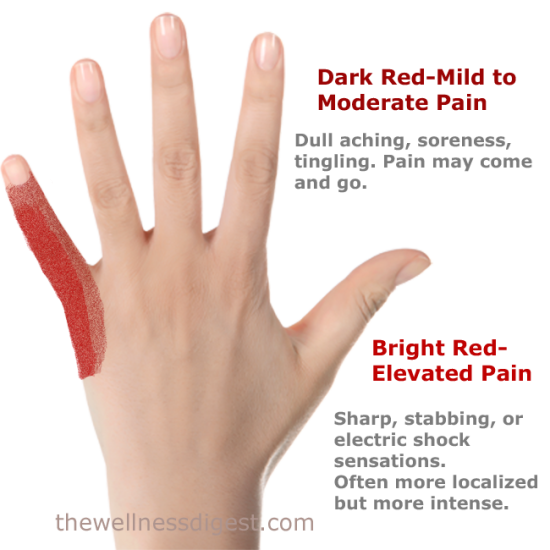
Are you experiencing cramping on the outside of your hand while texting or scrolling?
Does your hand feel clumsy when gripping wide objects like a tennis racquet or jar of pickles.
Does your little finger ache and feel stiff?
These pain symptoms all have one thing in common, they work out a small muscle on the edge of your hand called the abductor digiti minimi.
If you're experiencing pain, cramping and stiffness on the outside of your hand, this small muscle may be the source of the problem.
Table of Contents
Where Is The Abductor Digiti Minimi Hand Muscle?
The abductor digiti minimi connects to a bone in the wrist (pisiform bone) and descends the outside of the hand to connect with the base part of the little finger (proximal phalanx).
In non-med speak, it connects the wrist to the little finger.
For Detailed Muscle Anatomy See: Abductor Digiti Minimi Anatomy
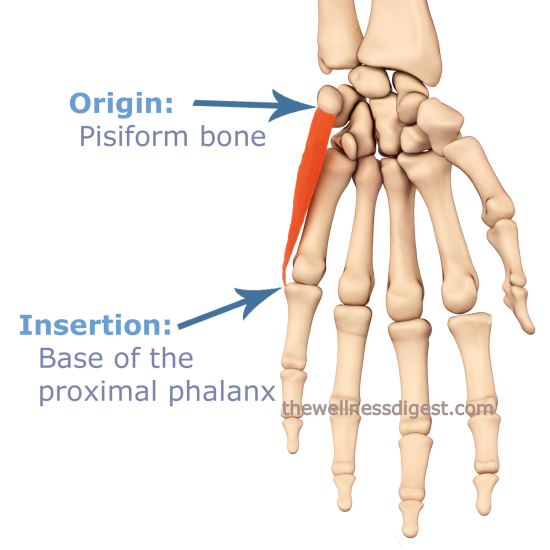
This small muscle helps you grip objects and spread your fingers
What Does The Abductor Digiti Minimi Do?
This muscle's main job is to move the little finger away from the others, a movement called abduction. It also helps bend the little finger toward the palm (flexion). Together, these actions play a key role in your ability to grip, hold, and release objects.
Every day tasks that rely on the muscle:
- Grasping wide objects
- Opening jars and containers
- Carrying groceries in handled bags
- Gripping a steering wheel
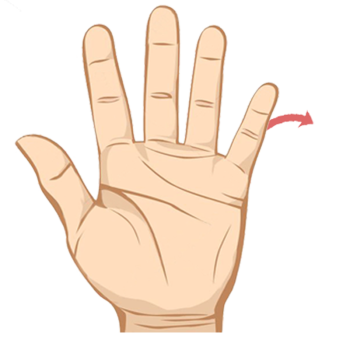
The ADM moves the little finger out and away from the other fingers.
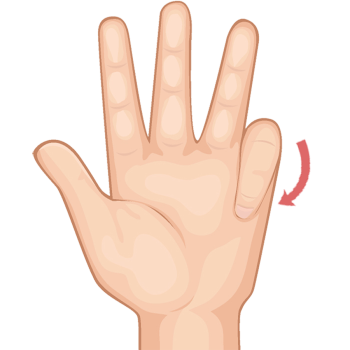
It bends the little finger down toward the palm providing the ability to grip objects.
What Are The Symptoms Of Abductor Digiti Minimi Hand Pain?
Opening and closing the hand, as well as gripping items, keep the ADM moving constantly. When abductor digiti minimi hand muscle is overworked, you will feel:
- Aching or burning pain along the outside edge of the hand and little finger
- An almost constant feeling of tightness
- Fatigue and weakness when spreading the fingers
- Weak grip on wide-handled objects (jars, racquets)
What Causes Abductor Digiti Minimi Pain?
This small outer-hand muscle can be overworked by certain motions or positions — even if they don’t seem intense at the time. If you are experiencing discomfort on the outside of your hand, try reducing these actions:
- Little finger abduction – moving the little finger out and away from the ring finger,
- Repetitive little finger movement – repeated reaching or tapping with the pinky during typing, piano, or gaming.
- Static hand positioning – keeping the hand still while using a mouse or holding objects.
- Finger hooking – carrying grocery bags or other items by hooking them on the fingers strains the outer hand.
- Forceful wide gripping – spreads and activates the hands outside muscles aggressively.
- Leaning on hands or elbows – puts pressure on the outside of the wrist, compressing the ADM.
- Trigger points – muscle knots in the ADM can cause local tenderness and referred pain into the little finger.
Activities That Contribute To Pain
Explanation of Abductor Digiti Minimi Hand Trigger Points
When this muscle is overworked, it can develop tight spots that send pain along the outside of your hand and up into the little finger. These tight knots and bands are known as trigger points. Suspect trigger point involvement if you have these symptoms:
Abductor Digiti Minimi Referred Pain:
- Sharp or burning pain in the muscle pad on the outside of the hand
- Aching in the little finger and occasionally the ring finger
- Your hand feels clumsy and weak when gripping wide objects.
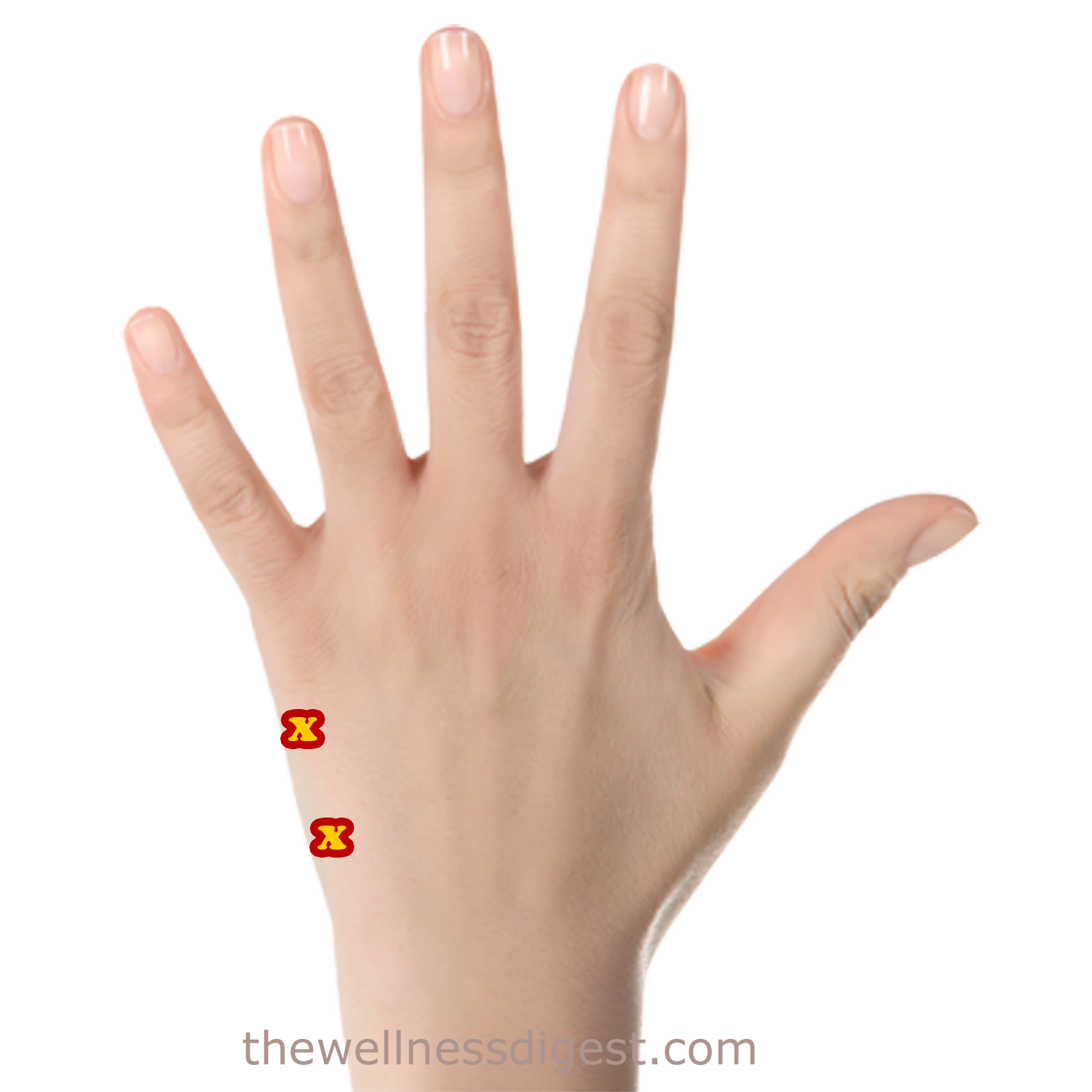
Self-Treatment For Trigger Points
You can treat abductor digiti minimi hand muscle trigger points yourself.
Trigger points in the abductor digiti minimi are easy to treat. Use the opposite hand to palpate and feel for sore and tender points on the outside of the hand. When you find a tender spot, apply pressure to the spot for 10 seconds and release. You can repeat this 3-4 times per session. When applying pressure, the pain level should be hurts so good, not OWWW! When you finish with the muscle on the hand, gently check the little finger using the same method, starting at the bottom of the finger and working up to the tip.
Once you have checked for trigger points, use the index finger and thumb of the opposite hand, starting at the bottom of the finger, and massage up the finger, gently pulling upwards. If that causes pain, lessen the pressure or stop. It should feel good, not cause pain! Trigger points respond best to several 1-2 minute treatments spread throughout the day.
While treating trigger points is the fastest way to relieve pain, incorporating heat, rest, and ergonomic tools can make a big difference in recovery and prevention.
The Cause of Your Pain May Not Be Where It Hurts
Learn how to find the root cause of some muscle pain and treat it at home.
Are you experiencing:
- Cramping on the outside of the hand?
- Aching in the outside of the hand?
- Little finger pain and stiffness?
- Difficulty opening/closing the hand
- Losing your grip strength?
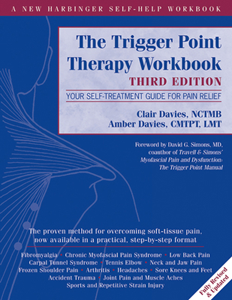
As an Amazon Associate, I earn from qualifying purchases.
It may not be what you think it is
When pain sets in, your first thoughts turn to joint dysfunction. Do you ever consider that your muscles may cause the pain? This book will change how you think about pain. Discover how to find and treat your muscle pain.
What Helps Relieve Abductor Digiti Minimi Hand Muscle Pain
The abductor digiti minimi hand muscle is in constant use and prone to overuse syndromes. If you are having recurring pain in the little finger and the outside of the hand, try these to relieve pain:
-
- First, and sometimes the hardest suggestion to follow, is to rest the hand. Take a break from activities that irritate the muscle.
- Use a warm pack or warm water soak for 10 minutes to reduce tightness.
- Wear compression gloves when engaging in activities like typing, gaming, crafting, and using tools. The extra support helps keep pain at bay.
- Consider the tools you are using and make changes. Use ergonomic tools; keyboards, mouse, padded handles on tools when appropriate, jar grips and openers, phone loops and grips. These simple changes can make a big difference.
- Use topical ointments, creams and gels to give temporary relieve from pain and stiffness. I use and recommend two gels for pain relief:
-
- Sombra Warming Gel warms without the burning heat of other heating gels/creams. One of the best for chronic pain and arthritis. Simply apply, do NOT massage in. It can be used up to four times per day and provides pain relief for hours.
- Biofreeze Professional Pain Relief Gel. Biofreeze has 3 different gels, but in my opinion, this is the best for pain relief. I recommend Biofreeze for injuries, a direct blow to the outside of the hand, or strains and sprains. It warms when applied but soon cools, providing relief. It can be applied up to four times per day.
These everyday changes may seem small, but they reduce the strain that leads to chronic pain and recurring trigger points.
When To Seek Medical Help
-
- Numbness or Tingling - Could mean ulnar nerve compression (not just muscle tightness).
- Waking Pain at Night - Persistent night pain may signal nerve irritation or inflammation.
- Hand Weakness or Clumsiness - Trouble gripping and fine motor issues can suggest something more serious.
- Swelling, Heat, or Redness - These signs point to inflammation or possible infection. You should not use any massage techniques when these symptoms are present.
- Visible Finger Deformity - A bent or shifting pinky may be tendon-related.
Every Home Should Have This Set Of Grips
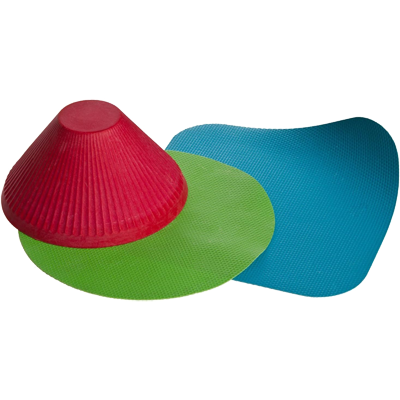
"The pain started after I opened a jar." I heard this often when someone came in with hand and wrist pain. Opening sealed jars and bottles strains many muscles of the hand and wrist. These simple and inexpensive grips reduce the muscle strain. I have had my set for 5 years and use them daily. Highly recommended.
How To Prevent Abductor Digiti Minimi Hand Pain
There are several steps that you can take to limit overuse and abductor digiti minimi muscle strain. Practicing these simple precautions will help keep the muscle healthy:
- Focus on keeping your wrist in a neutral position, not overly bent upward or down.
- Don't keep your little finger bent for an extended period.
- Keep the little finger relaxed, not straight and stiff during activities.
- Take frequent breaks during repetitive activities.
- Perform hand-strengthening exercises regularly.
- Use proper grip technique in sports and activities.
- Stretch before and after using the hands extensively.
Stretching and Strengthening Exercises
The Prayer Pose Stretch
I really like this stretch. It is simple and can be done anywhere. It not only helps with abductor digiti minimi hand pain, but it also stretches the forearm, shoulders, and chest muscles. Give it a try!
Rubber-band Pinky Abduction
A simple strengthening exercise for the little finger and muscles on the outside of the hand. Grab a thin rubber band and follow along.
Frequently Asked Questions
Q: Can phone use really cause pain the abductor digiti minimi hand muscle?
A: Yes. Holding a large phone with one hand keeps the ADM in a tightened state for minutes at a time. It is worse if you are holding the phone and texting with your thumb.
Q: Can this muscle cause wrist pain?
A: Yes, indirectly. Gripping and holding wide items changes your hand's posture and can lead to strain in wrist tendons.
Q: Will a wrist brace help?
A: A soft brace can help if it holds the wrist in a neutral position, which reduces over-gripping strain on the ADM.
It May Not Be The Abductor Digiti Minimi Hand Muscle. Check These Other Muscles That Can Contribute To These Conditions.
Muscles With Similar Pain Patterns
Areas of Pain
Abdominal Pain | Ankle Pain | Arm (Lower) Pain | Arm (Upper) Pain | Back (Low) Pain | Back (Upper) Pain | Chest Pain | Elbow Pain | Foot Pain | Groin Pain | Hand Pain | Head Pain | Hip Pain | Knee Pain | Leg (Low) Pain | Leg (Upper) Pain | Neck Pain | Pelvic Pain | Shoulder Pain | Wrist Pain
Product Recommendations For The Adductor Digiti Minimi Hand Muscle:
Below is a list of the products recommended above. I only recommend products I use personally and have used as a therapist.
- The Trigger Point Workbook - an excellent resource for those interested in learning about muscle pain.
- IMAK Compression Gloves - use during times of repetitive tasks to support the hand and relieve pain.
- Jar Grips - a must-have! Many hand and wrist injuries occur while trying to open sealed jars and bottles.
- Sombra Warming Gel - use for chronic pain and arthritis. (not sold in stores)
- Biofreeze Professional Pain Relieving Gel- recommended for injuries, strains and sprains.
As an Amazon Associate, I earn from qualifying purchases at no charge to you.
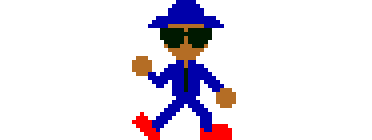
Added to make you smile!
Trusted Sources for Muscle Anatomy and Pain Patterns
These are the top 6 sources I use to verify muscle function, pain referral patterns, treatment techniques, and anatomical structure. My experience as a massage therapist informs the interpretation and practical application of this information.
- Travell, J. G., & Simons, D. G. (1983). Myofascial Pain and Dysfunction: The Trigger Point Manual, Volume 1 – The Upper Extremities. Williams & Wilkins.
- Travell, J. G., & Simons, D. G. (1992). Myofascial Pain and Dysfunction: The Trigger Point Manual, Volume 2 – The Lower Extremities. Williams & Wilkins.
- Davies, C., & Davies, A. (2013). The Trigger Point Therapy Workbook: Your Self-Treatment Guide for Pain Relief (3rd ed.). New Harbinger Publications.
- Muscolino, J. E. (2016). Kinesiology: The Skeletal System and Muscle Function (3rd ed.). Mosby.
- Clay, J. H., Allen, L., & Pounds, D. (2015). Basic Clinical Massage Therapy: Integrating Anatomy and Treatment (3rd ed.). Lippincott Williams & Wilkins.
- Dalton, E. (n.d.). Myoskeletal Alignment Techniques. Retrieved from https://erikdalton.com

